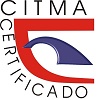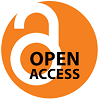El juego dramático como alternativa didáctica para la articulación de los fonemas en primer grado
Dramatic game as a didactic alternative for the articulation of phonemes in the fierst grade
Palabras clave:
Lenguaje, Fonemas, didáctica, ArticulaciónResumen
En primer grado cuando se trabajan los fonemas, dentro de ellos hay un grupo significativo que por su forma articulatoria y de colocación de los órganos resonadores, les son muy complejos a los escolares de primer grado articularlos de forma correcta, tomando como referente lo anteriormente citado de llevo a cabo la investigación. La investigación que se aplicó es de diseño no experimental con eje transversal, su enfoque es cualitativo descriptivo. Se aplico con el fin de contribuir al mejoramiento de la articulación de los fonemas |ṙ|, |f|, |s|, |k|, |ĉ|, |h|, |g|, |b|, |d| y en la combinación de fonemas con |l|, |r|, en primer grado, mediante la aplicación de juegos dramáticos. Para la población probabilística se selecciono 58 alumnos de primer grado, y la muestra intencional fue de 27 alumnos. Para llevar a cabo la investigación se empleó como método rector de la ciencia el dialéctico-materialista para ello se emplearon los métodos específicos de investigación del nivel teórico, el Análisis-síntesis, Análisis-documental, y los del nivel empírico Prueba Pedagógica de entrada y de salida, Consulta a Expertos Y el Anális porcentual El instrumento utilizado para la recolección de datos fue la Prueba Pedagógica de entrada y de salida, los datos se procesaron estadísticamente, los resultados muestran que la aplicación de los juegos dramáticos contribuyó al mejoramiento de la articulación de los fonemas y la combinación de los fonemas.
Abstract:
In first grade, when phonemes are worked on, within them there is a significant group that, due to their articulatory form and placement of the resonating organs, are very complex for first grade students to articulate them correctly, taking the aforementioned as a reference. of carrying out the investigation. The research that was applied is of a non-experimental design with a transversal axis, its approach is qualitative descriptive. It was applied in order to contribute to the improvement of the articulation of the phonemes |ṙ|, |f|, |s|, |k|, |ĉ|, |h|, |g|, |b|, |d| and in the combination of phonemes with |l|, |r|, in first grade, through the application of dramatic games. For the probabilistic population, 58 first grade students were selected, and the intentional sample was 27 students. To carry out the investigation, the dialectical-materialist method was used as the guiding method of science. For this, the specific research methods of the theoretical level, Analysis-synthesis, Analysis-documentary, and those of the empirical level were used Pedagogical Test of entry and output, Expert Consultation and Percentage Analysis The instrument used for data collection was the input and output Pedagogical Test, the data was statistically processed, the results show that the application of dramatic games contributed to the improvement of the articulation of phonemes and the combination of phonemes.
Keywords: Phonemes, articulation, didactic, dramatic game
Descargas
Citas
Piñero Abreu, T. (2019). Sistema de juegos didácticos para el desarrollo del lenguaje y la corrección de la pronunciación de los sonidos en primer grado: Didactic game system for language development and correction of the pronunciation of sounds in the first degree . Horizonte Pedagógico, 8(3), 46–55. Recuperado a partir de http://www.horizontepedagogico.rimed.cu/index.php/hop/article/view/117
Armas, M. K., Marcaida, P. Y & Tejeda, G. A (2013) Propuesta de juegos didácticos para ejercitar los contenidos del análisis fónico en los niños de sexto año de vida. Conrado /ISSN 1990-8644.
Cárdena, T. (2017) Métodos de exploración logopedica. Editorial Pueblo y Educación. La Habana.
Conchy. & Herrera (2004) Programa correctivo para mejorar la articulación de los niños de primer grado de la Educación Primaria de la E.E.30070. San Marín de Pincho, Chupaca. Tesis para título profesional, Huancayo.
Diccionario Cervantes Digital, (2018). Diccionario de términos clave de ELE. Definición de juegos dramáticos. Centro Virtual Cervantes. España.
https://cvc.cervantes.es/Ensenanza/biblioteca_ele/diccio_ele/default.htm
López, B. M. (2001). El lenguaje infantil. Editorial Pueblo y Educación, La Habana.
Pavis, P. (1988). Diccionario del teatro, dramaturgia, estética, semiología, Tomo I: Editorial Holguín, Holguín.
Ponce, M., & Pasco, M. (2015) Guía de investigación (1ra ed.). Lima: Pontifica Universidad Católica del Perú.
Sampieri, R (2019) Metodología de la investigación (vol. 4) México, D. F. México: Megraw-Hill Interamericana.
Roméu Escobar, A. (2003). El enfoque cognitivo, comunicativo y sociocultural de la enseñanza de la Lengua y La Literatura. Editorial Pueblo y Educación, La Habana.
Vygotsky, L. (1998) Pensamiento y lenguaje. La Habana. Pueblo y Educación.
Yachi, J. (2001) Elaboración de cuentos infantiles sobre la base de imágenes fijas y sus efectos sobre la articulación verbal en niños de cinco años del J.N 364 Huari-Huancayo. Tesis para optar por el título de procesional, Huancayo.
Publicado
Cómo citar
Número
Sección
Licencia
Derechos de autor 2023 Adriana Adita García Barrios, Lianet González Herrera

Esta obra está bajo una licencia internacional Creative Commons Atribución 4.0.
Horizonte Pedagógico es una revista Open Access, lo que quiere decir que todo su contenido es accesible libremente sin cargo para el lector o su institución. Los usuarios están autorizados a leer, descargar, copiar, distribuir, imprimir, buscar o enlazar a los textos completos de los artículos de esta revista sin permiso previo del editor o del autor, de acuerdo con la definición BOAI de open access. Los autores que publican en esta revista están de acuerdo con los siguientes términos: Los autores conservarán los “Derechos de autor” y garantizan a la revista el derecho de ser la primera publicación del trabajo. La revista se encuentra protegida bajo una licencia internacional de Creative Commons Attribution License Atribución 4.0 Internacional (CC BY NC 4.0), que permite a otros compartir (copiar y redistribuir el material en cualquier medio o formato) y adaptar (remezclar, transformar y construir a partir del material), para cualquier propósito, incluso comercialmente. Bajo las siguientes condiciones: atribución (usted debe dar crédito de manera adecuada, brindar un enlace a la licencia, e indicar si se han realizado cambios y no comercial — Usted no puede hacer uso del material con propósitos comerciales. Puede hacerlo en cualquier forma razonable, pero no de forma tal que sugiera que usted o su uso tienen el apoyo de la revista o el autor de la publicación.






















